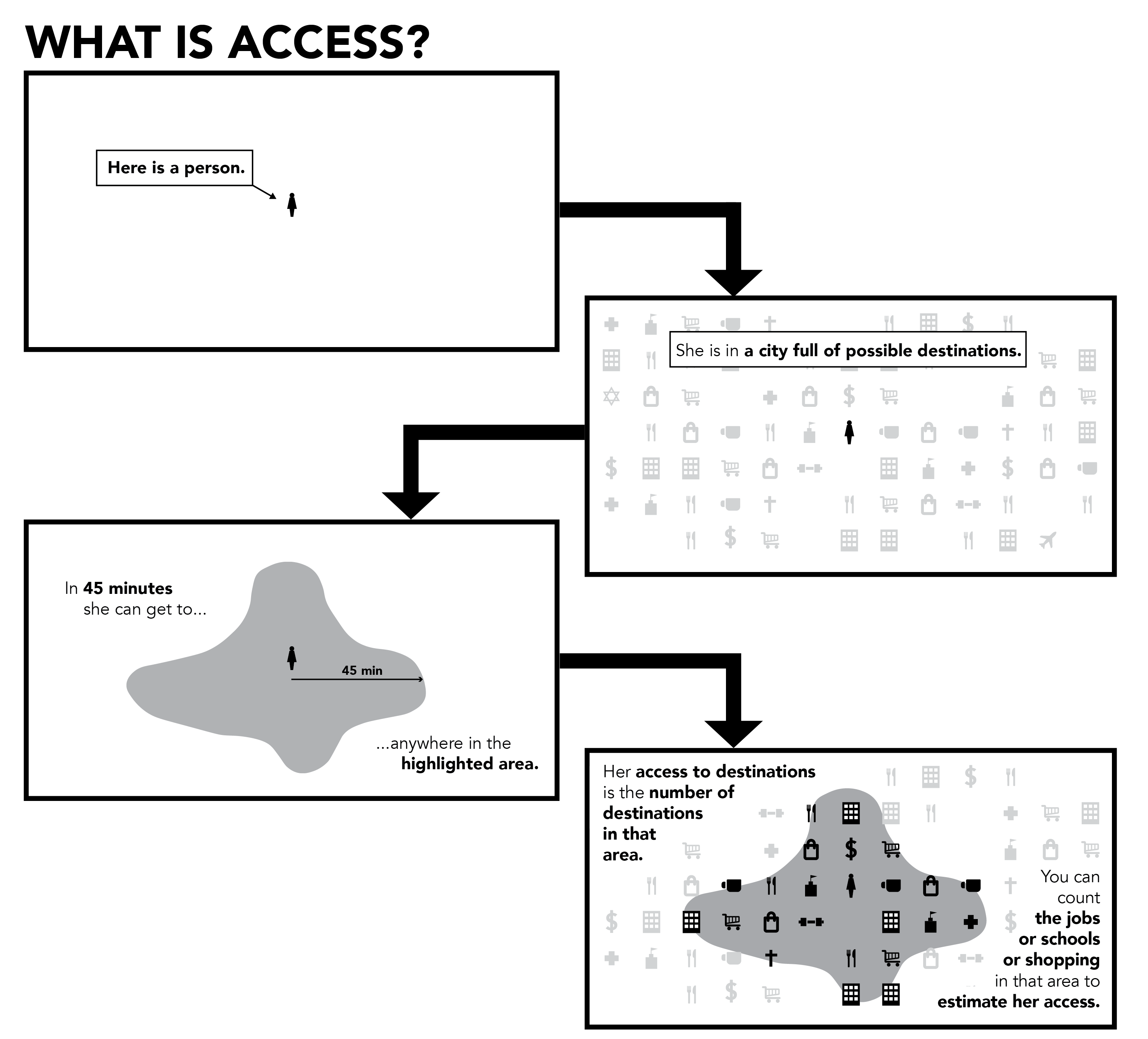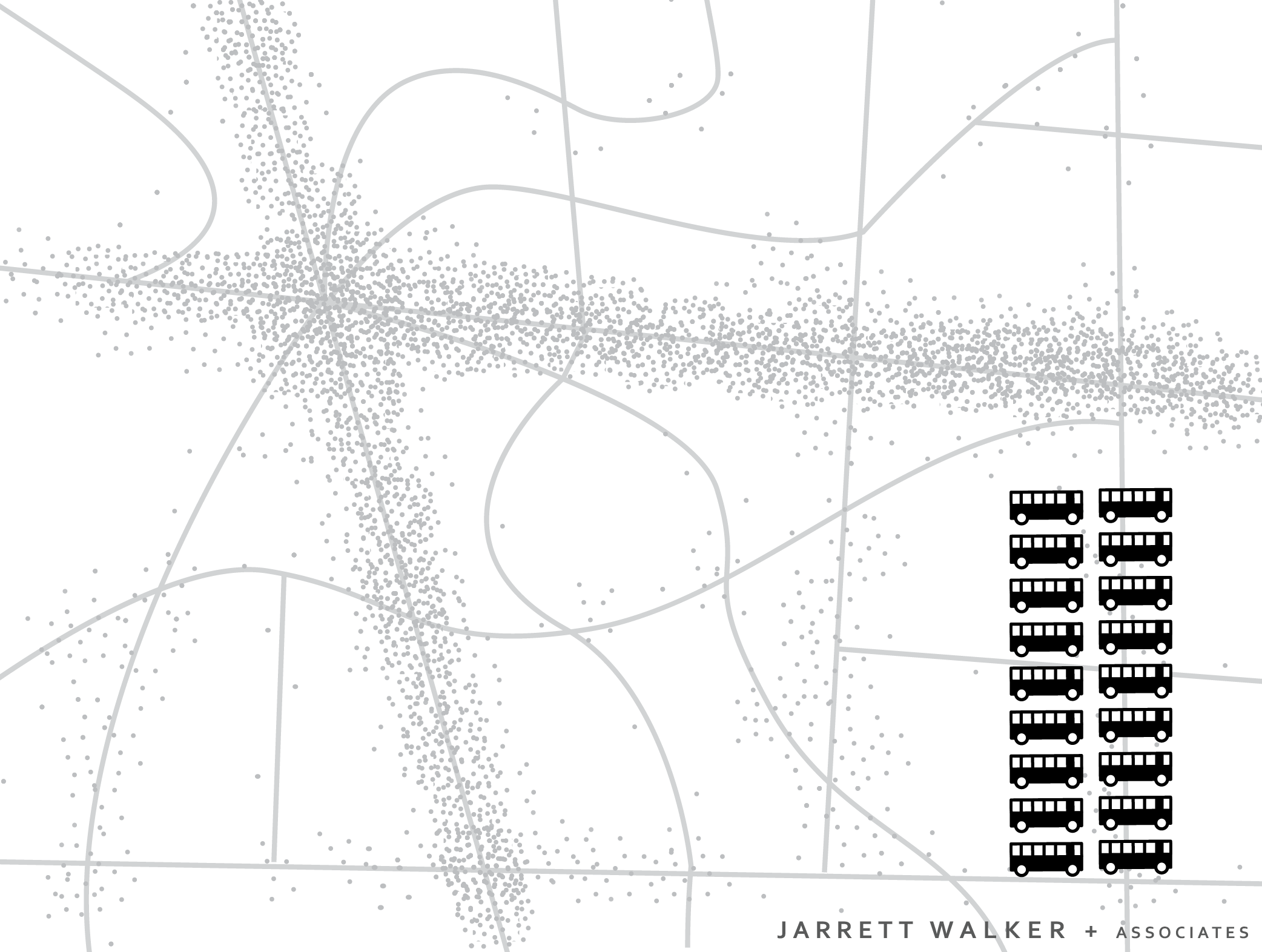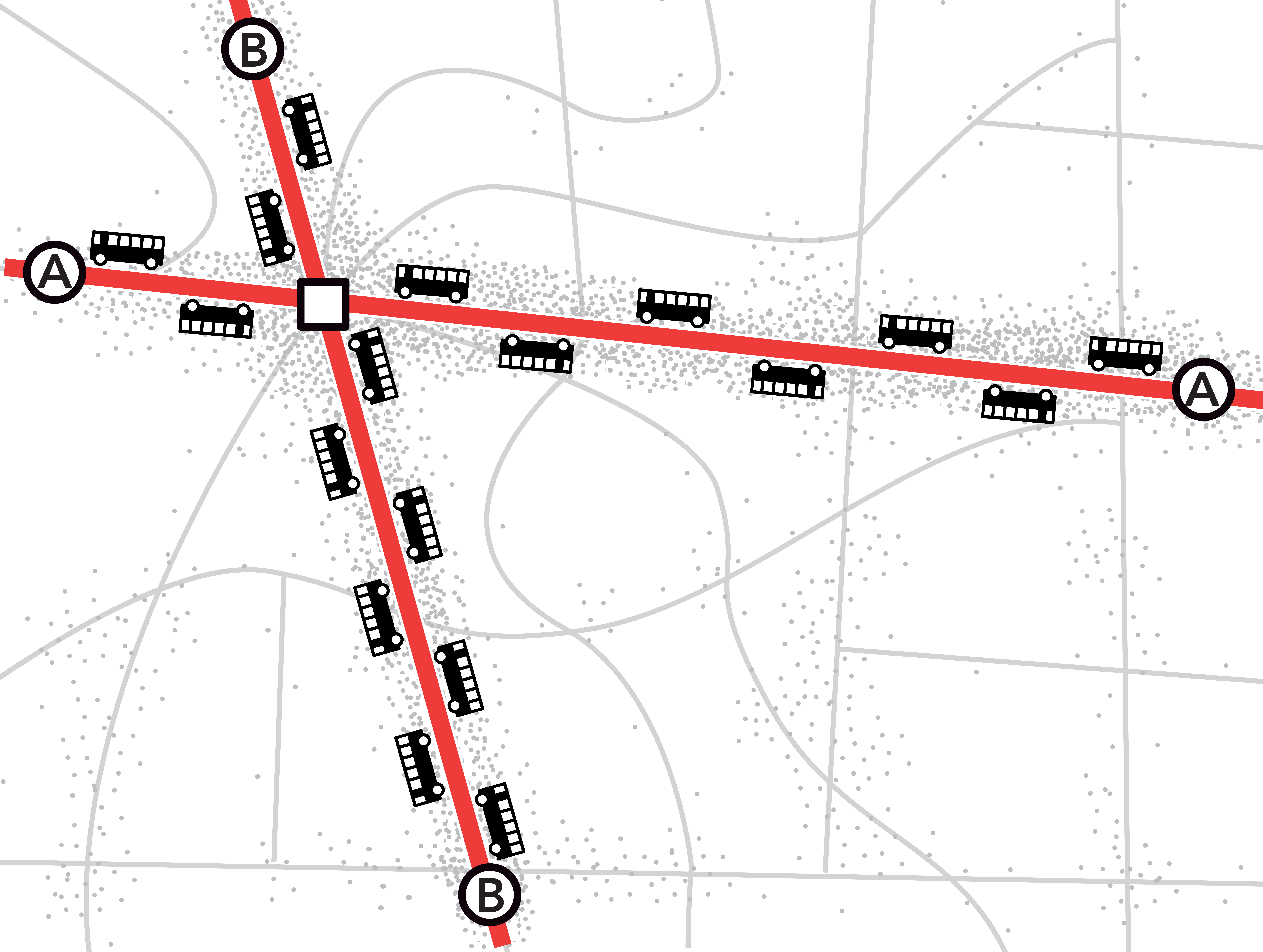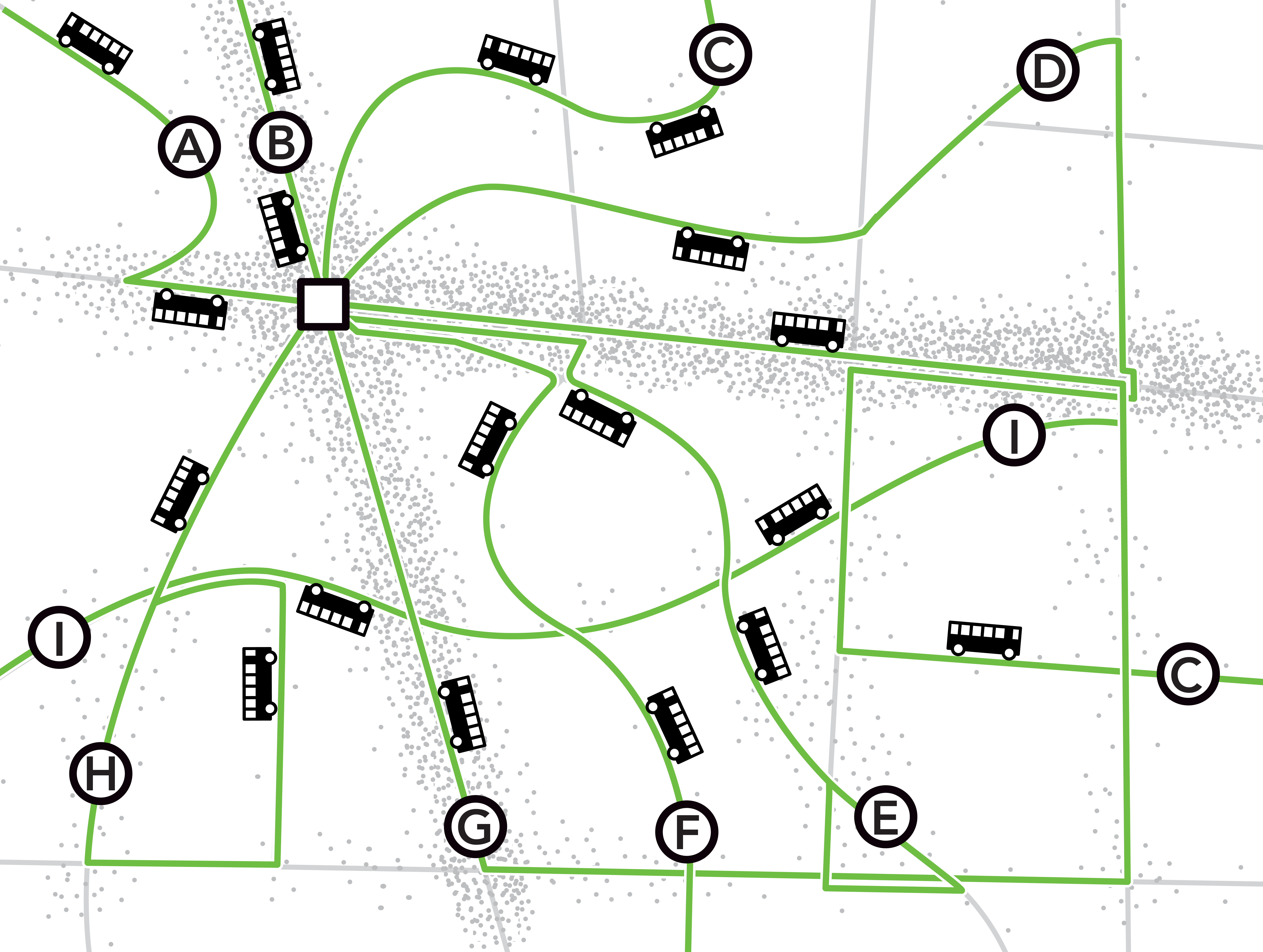Choices
How do you build a high-ridership transit network?
By making transit useful to many people.
Useful transit provides more access— it lets you reach more opportunities in a given amount of time.
- Providing high-frequency routes
- Forming a connected network
- Making transit reasonably reliable and fast
- Focusing on places that are:
- Dense
- Walkable
- Nearby
- Direct

How should we reimagine the DART Network? It depends.
All transit agencies must balance the competing goals of high ridership and high coverage. Within a limited budget, if an agency wants to do more of one, it must do less of the other. This problem arises from the fact that the two goals produce opposite kinds of design. We explain this trade-off below. The “right” balance of ridership and coverage goals is different in every community.
Imagine you are the transit planner for this fictional town. The dots are people and jobs—most are concentrated around two roads, as in many towns.
You have 18 buses to design a transit network.
Before you can plan transit routes, you must first decide: What is the purpose of your transit system?

High Ridership Goal
All 18 buses are focused on the busiest streets, so buses come frequently (maybe every 15 minutes). Waits are short but walks to service are longer for people in less populated areas. Frequency and ridership are high but some places have no service.

High Coverage Goal
The 18 buses are spread around so that there is a route on every street.Everyone lives near a stop, but buses come infrequent (maybe every 60 minutes). Only a few people can bear to wait so long, so ridership is low.

Both goals are important, but within a limited budget shifting towards one means shifting away from the other.
Remember that high ridership serves several popular goals for transit, including:
- Competing more effectively with cars, so that the region can grow without increasing traffic congestion.
- Collecting more fare revenue, increasing the budget paid by fares.
- Making more efficient use of tax dollars by reducing the cost per ride.
- Improving air quality by replacing vehicle trips with transit trips.
- Supporting dense and walkable development and redevelopment.
- Extending the most useful and frequent services to more people.
On the other hand, many transit goals are achieved by providing higher coverage, including:
- Ensuring that as many people as possible in the service area have access to some transit service, no matter where they live.
- Providing basic transit access for people who cannot use personal vehicles.
- Serving newly developing places, even if they don’t yet have the size or density to constitute a large transit market.